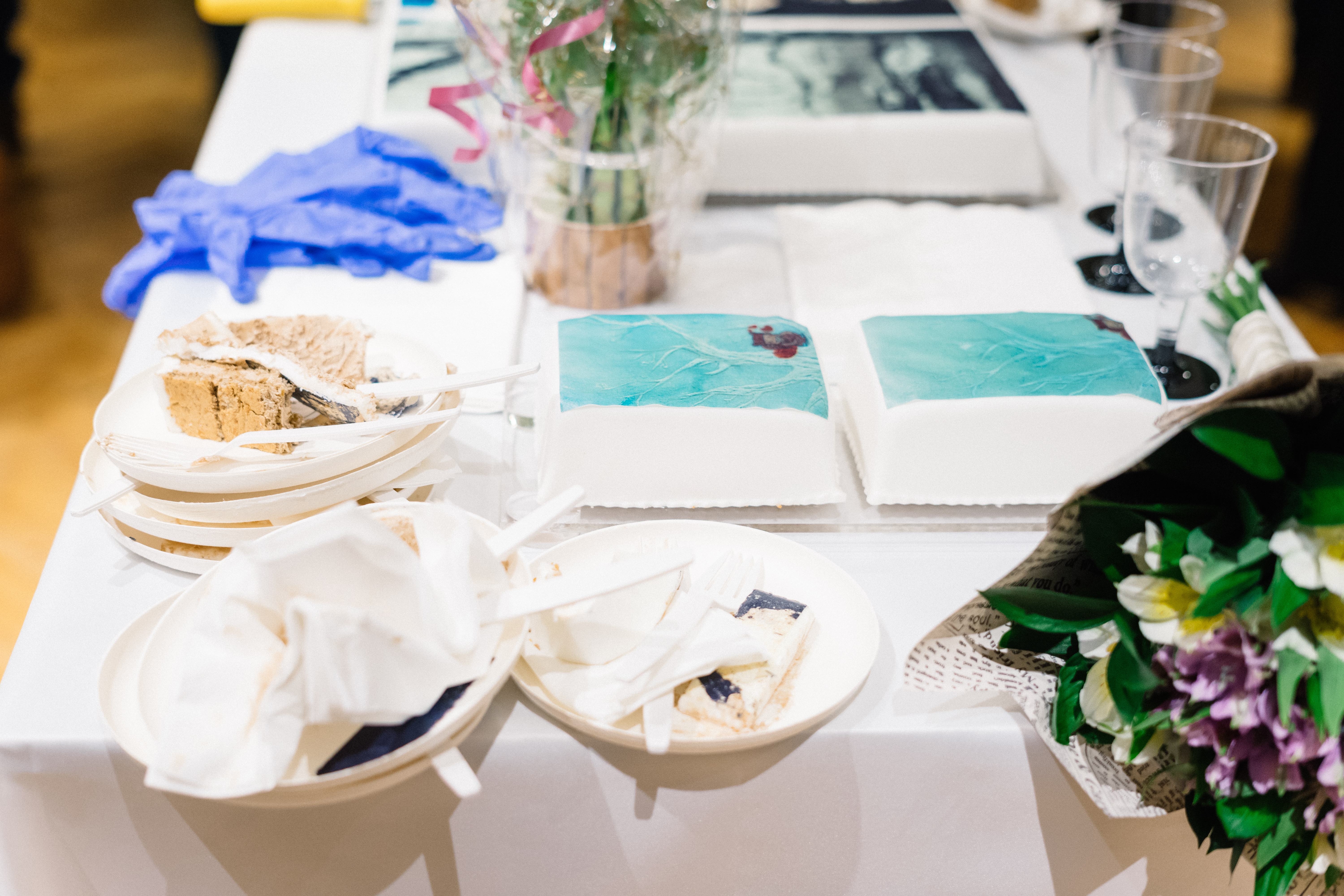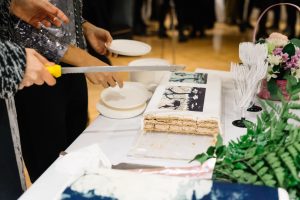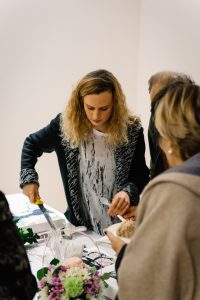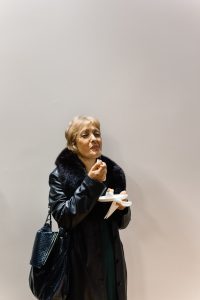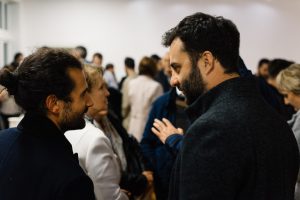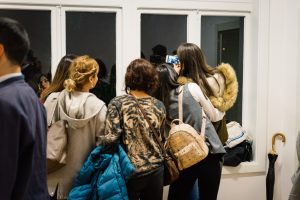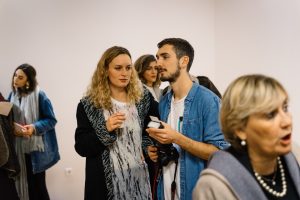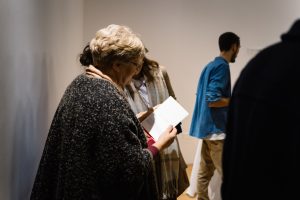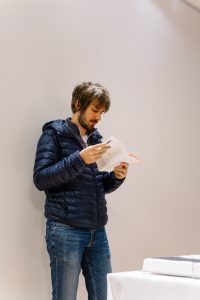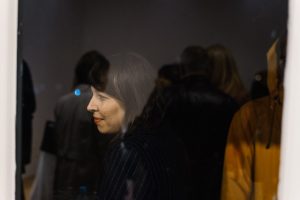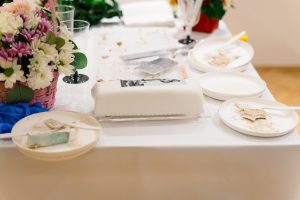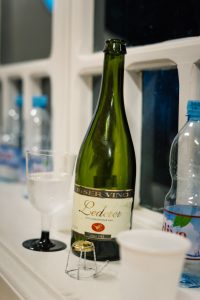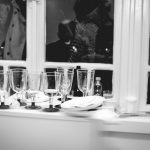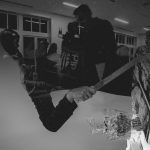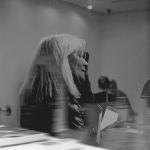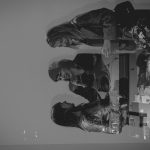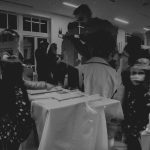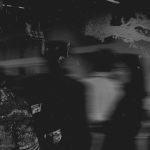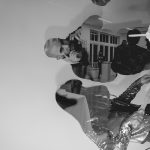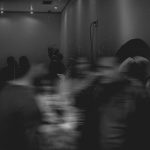samostalna izložba
umjetnica Adrijana Gvozdenović /
kustoskinja Teodora Nikčević /
produkcija Marina torte i kolači u saradnji sa Dragicom Gvozdenović i uz pomoć privatnih donacija /
fotografije otvaranja izložbe i postavka izložbe nakon otvaranja Ognjen Kračković /
tekst Milena Pejović i Nataša Nikčević (pdf)
muzika Marko Radišić, Adrijana Gvozdenović /
prevod na engleski Darja Marija Vuletić, Adrijana Gvozdenović /
katalog kao potencijalni prostor za umjetničko djelovanje (pdf)
…
solo exhibition
artist Adrijana Gvozdenović /
curator Teodora Nikčević /
production Marina cakes in cooperation with Dragica Gvozdenović and with a help of private donations /
photographs of the opening of the exhibition and exhibition setting after the opening Ognjen Kračković /
text by Nataša Nikčević, Milena Pejović, Adrijana Gvozdenović /
music Marko Radišić, Adrijana Gvozdenović /
english translation Darja Marija Vuletić, Adrijana Gvozdenović /
catalogue as a space of potential for artistic intervention (pdf)
freely translated excerpts from the text about the exhibition, written by Milena Pejovic:
“This exhibition is referring to Adrijana’s first solo exhibition, Interior Land(e)scape, which was created within the same institutional framework, Contemporary Art Centre in 2011. Through various elements of the exhibition, this time she creates a symbolic meta-text that deconstructs artistic production in the local context and the relationships within it, regardless of whether they consider the artist, the institution or the audience.
Formally, for this occasion, Adrijana exhibits cakes on which she printed motifs from the art prints that were displayed at her first exhibition. Although the artist remains faithful to the medium of printing, this work does not represent any formal or technical experimentation, but skilfully challenges the production of an artwork.
Adrijana gives the opportunity and autonomy to the artist of the younger generation to present himself within this exhibition. She introduces him the concept of the exhibition, invites him to document the opening, after which they will create a photographic installation that will be exposed until the end of the exhibition. In this way, the artist points to the need for a pluralistic approach to art in which generational and formally different expressions are considered equally valid.
If you pay attention to the impressum of the catalog, you will notice that the production of the exhibition is signed by a private company for making cakes in cooperation with the artist’s mother, with the help of private donations.
Namely, in the text of the open call which invites artists to exhibit in this institution, it is stated that the Contemporary Art Centre of Montenegro provides: gallery space, catalog, invitation, poster, media presentation and organises the opening of the exhibition. That is to say: the institution provides the physical and marketing space for the presentation of the artwork. However, for its realisation – the basic element necessary for organising and promoting the exhibition, and therefore for the implementation of gallery activity that is, in accordance with the law, the founding act and the statute of this institution defined as the first and most important activity – somebody else has to take care of.
Although for a moment such a statement may sound unexpected, or perhaps even provocative, it is indeed a common practice that the production of an artwork as well as the very act of artistic work in the domain of visual arts in the Montenegrin context is almost always volunteer work, without any financial compensation.
Adrijana questions the artists’s attitude towards the system of the so-called art market using an exhibition catalog, in which she exposes and demystifies the sale of works of art, concretely those art prints that were exhibited at her first solo exhibition.
Notwithstanding, in this segment of the artist approaches very openly, without any mystery and pretension, the way of selling her artworks certainly does not differ much from the situation in which other Montenegrin artists are.
Regardless of the relevance or presentation of the artwork, artists in Montenegro can sell their works in a very narrow framework of the market, consisting of several institutions that, at the very least, have vague regulations on acquisitions, and rare, mostly anonymous private collectors.”
photos by Miraš Šljivančanin
